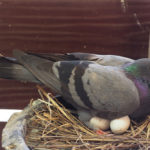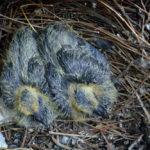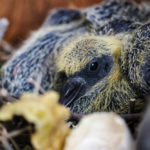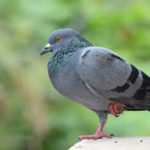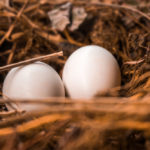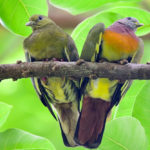Pigeons make the most marvellous parents.
They are a rare species of bird in that both male and female partners are involved in the rearing process for their chicks, and both produce crop milk to feed their young.
These beautiful birds have their parenting skills down to a fine art.
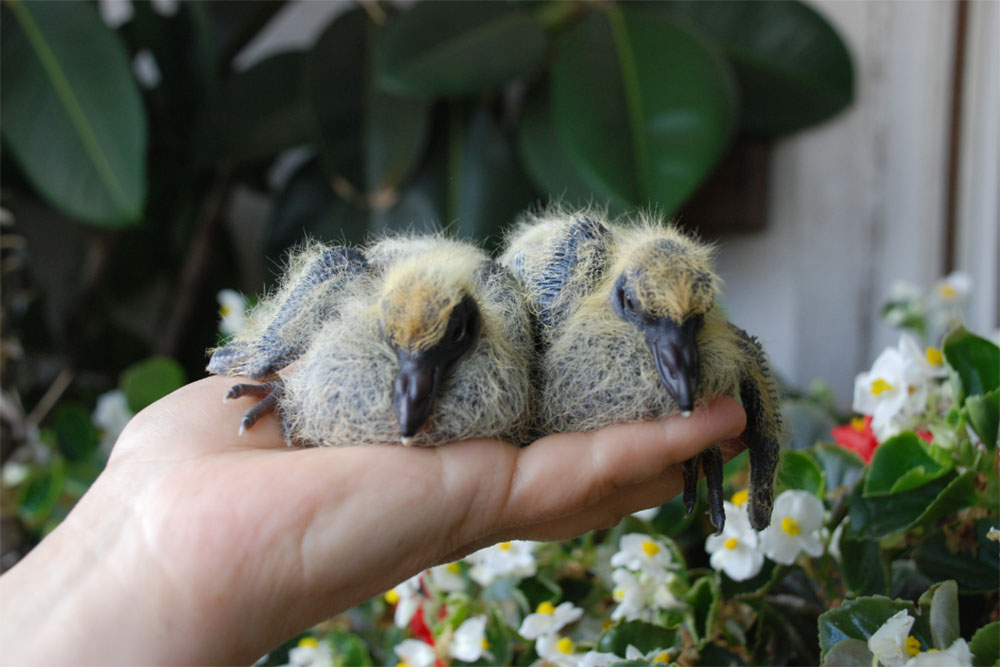
They tend to lay between 1 and 3 eggs, and their chicks are known as squabs or squeakers due to the high-pitched tweet they make in the nest.
That is why, if you come across an abandoned squab or decide to rear one yourself as a pet, you are in for quite a ride.
It is possible to successfully rear a baby pigeon however, if you pay great attention and try to mimic the behavior of their parents as closely as possible.
Read on to find out all you need to know about these little cooing cuties and how to take care of them properly.
Items To Prepare
As with preparing for the arrival of any baby, there are a few things that you will need to get ready in advance. These include:
- Baby Pigeon Crop Milk Formula
- Small Syringe
- 40 watt heat lamp
- Comfortable, Flat-bottomed box
Rearing – An Overview
You will also need to prepare mentally, and make sure that you know exactly what to expect.
Raising a baby pigeon can be a very delicate task, especially since they take longer than many bird species to reach maturity.
In fact, baby pigeons stay in the nest for the first 6 weeks of their lives, so this is how long you will need to nurture them for.
The three key things to keep in mind during this time are:
- Feeding – giving your squab the correct nutrients, in the correct amounts
- Warmth – keeping your squab at the correct temperature
- Housing – making sure your squab has a safe and comfortable nest
As previously mentioned, your aim should be to keep each of these things as authentic to how they would be in the wild as possible… without the exposure to cats and foxes perhaps!
How Long Till They Hatch?
Now that you have all the items you require, it is just a matter of waiting for the egg to hatch.
Caring for a pigeon egg is something that also requires great dedication and detail, and you should research how to keep the egg incubated at the correct temperature to be sure to do it right.
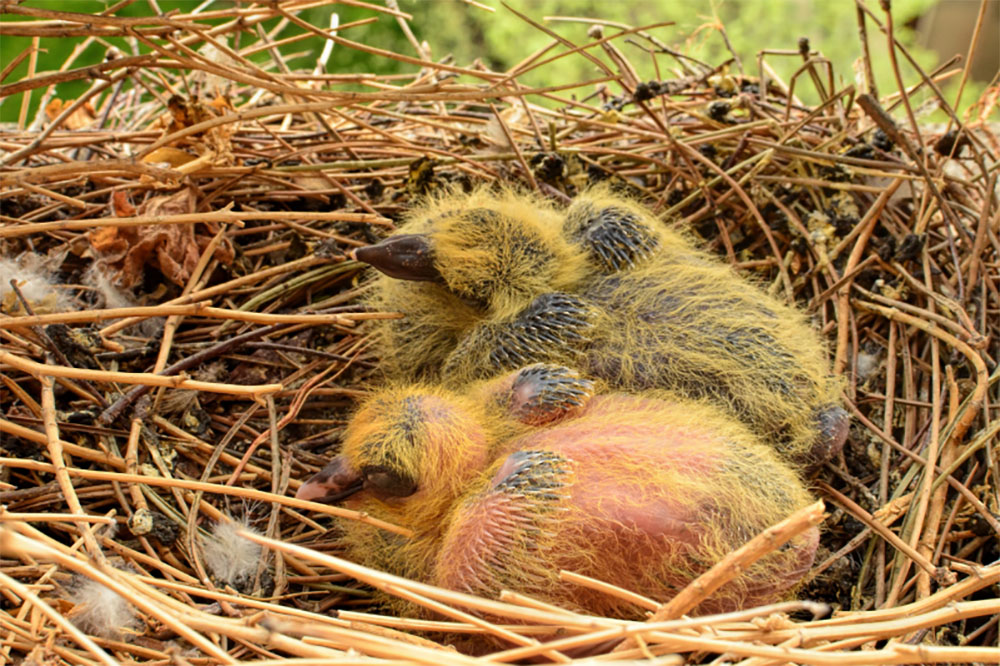
Baby pigeons generally take around 18 days from being laid to when they hatch.
The process of hatching is actually an incredibly arduous ordeal for the little squabs, and uses up a lot of their precious energy.
For this reason you should let your baby pigeon rest for 12 hours after they hatch before feeding them.
Even if you desperately want to pick them up and cuddle them, it is far kinder to allow them to settle and regain their strength.
If you notice that your squab is distressed or struggling to breathe after hatching, you may need to call a veterinarian.
Feeding
After 12 hours you will be able to give your squab its first feed, and this really is the most important (and most complicated) element of caring for a baby pigeon.
The first thing to say is that there are many misconceptions regarding a baby pigeon’s menu, and contrary to popular belief, you should not feed your squab worms or dairy milk!
These things will make your pigeon very sick and could even cause them to become fatally ill – so avoid them at all costs.
What To Feed Your Baby Pigeon
You should feed your squab specialist pigeon-hatching hand-rearing formula that can be bought online and in most pet and bird stores.
In the wild, parent pigeons produce something called crop milk, which is a partially digested liquid filled with all the nutrients their chicks need in order to grow and develop.
The hand-rearing formula that you buy will mimic the consistency and nutrients of their natural crop milk.
If you can’t get your hands on any specialist formula however, there are alternative options. These include:
- Oatmeal
- Baby formula
- Soft fruits and vegetables mixed with breadcrumbs, rolled into tiny balls
Each of these options have differing specifications and you will therefore need to research how much you should give your squab accordingly.
In the same way, different hand-rearing crop milk formulas have different qualities so be sure to read the information provided on the packet to ensure you give your squab the correct quantity.
The formula will need to be thickened gradually as the baby pigeon grows towards maturity, and the quantities will need to be increased as well.
When To Feed Your Baby Pigeon:
As we have already established, you should not attempt to feed your baby pigeon for 12 hours after it has hatched.
However, once the first 12 hours have passed it will be time to give your little squab some much needed sustenance.

Pigeons have something called a crop which is situated between their throat and their stomach. It is part of their digestive tract, and is essentially a small sack where undigested food is stored.
In adult pigeons, it is the place where crop milk is formed.
This little crop can be a handy indicator of when your squab needs to be fed. If you gently touch the front of the chest and the squab is lying flat, then you know that your pigeon needs feeding.
As you feed them you will notice the crop begin to fill out and slightly protrude. When you touch it again it should feel like a balloon that is about three-quarters filled with liquid.
You can monitor this throughout the feed because it does not hurt the pigeon as long as you only touch it very softly.
Pigeons also have two little bubble-like sacks on their shoulders.
These will also fill out as the bird is fed and can act as handy indicators for your feeding quantity.
As every bird is different and their crops are differently sized too it is difficult to give exact measurements as to how often and how much you should feed your squab.
The best advice is to monitor their crop closely and listen out for squeaking or tweeting, which is a sign they are hungry.
Do not overfeed your baby pigeon as overfeeding can lead to small pockets of undigested food becoming trapped in the crop.
If you can feel that there is still a small amount of food in the crop then hold off with the next feed until it has emptied. In general, you should allow your squabs crop to be fully emptied every 24 hours.
If you notice that the crop is not emptying then you will need to call a veterinarian as your pigeon may be blocked and become unwell.
How To Feed Your Baby Pigeon
In the wild, the mum and dad pigeons feed their chicks from their own mouths, but don’t worry, you won’t be doing that! Instead, you can use a small, plastic syringe.
To allow the little chic to get enough goodness the parent pigeons open wide and let their babies insert their beaks down their throat.
You will have to reverse this process and wait for the chick to open its beak so that you can insert the syringe a small way into their beaks.
Do not try to force the syringe down their throat as it is unnecessary and will distress your squab.
Baby pigeons are very sensitive creatures with very fragile constitutions. They are very easily distressed, and if they become too alarmed they can suffer a heart attack and die.
For this reason you should adopt a ‘gently, gently’ approach to handling and feeding.
Keep your movements slow and steady as you approach and pick up the bird, and whilst cradling it do not squeeze too tightly. T
ry to keep noise levels low and consistent to maintain a calm atmosphere – you could even try some gentle cooing if you fancy it.
If your squab does become distressed (which is very common and to be expected) it is best to gently place them back in their nest and let them settle. You can come back in a few minutes and try again.
For the most part, when hungry enough they will quieten down and accept their feed.
Warmth
Keeping your squab warm will be another very important task that you will have to carry out when hand-rearing.
Pigeon parents stay with their hatchlings for the first 2 weeks of their lives in order to snuggle and brood, so without them around it will fall to you to provide adequate warmth for your squab.
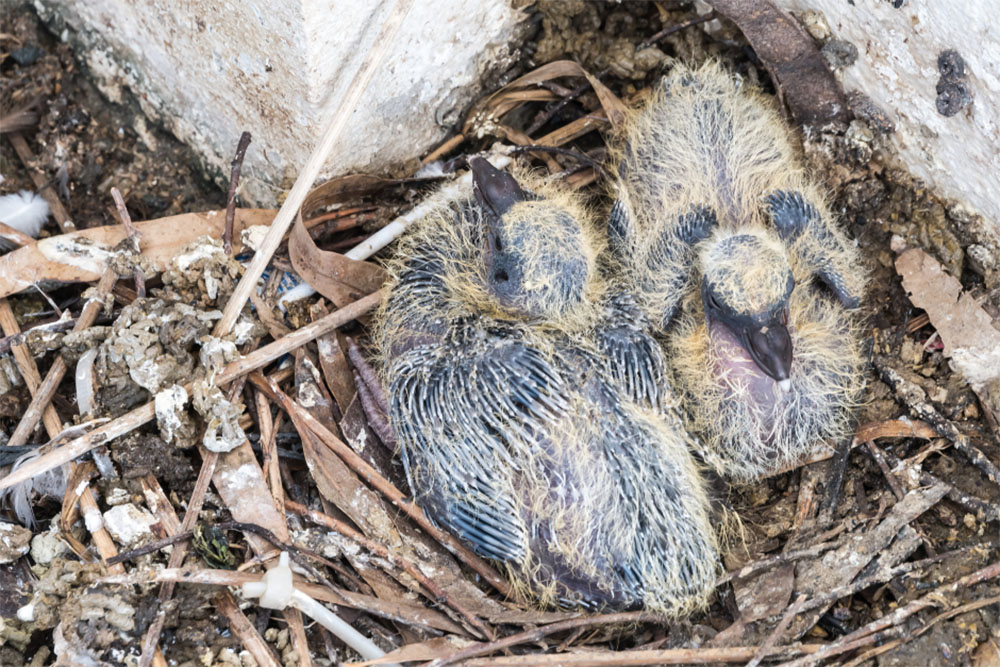
Most experts say that you should aim for a temperature of around 90 degrees. The most important thing is that the heat source is gentle, controlled and consistent.
You should never place your baby pigeon by a fireplace or in bright sunlight as this kind of heat cannot be controlled and could cause the squab to become very unwell.
Instead, a great idea is to invest in a simple 40 watt heating bulb, like the ones that are used to incubate pet lizards.
However, if you don’t have access to one of these you could try any of the following options:
- A hot water bottle filled with warm water and covered in a blanket or towel
- A fluffy pet snuggle pad (available from pet stores)
- A cardboard box lined with newspaper for insulation and covered in towels
Housing
Making sure that your squab has a warm and comfortable place to call home will really help keep them happy, safe and healthy as they grow.
A large box filled with towels will work really well as long as it has a sturdy, flat bottom to prevent your squab developing foot problems.
Here are a few key considerations to keep in mind as you build your squabs nest:
- Keep out of reach of other pets like cats and dogs
- Don’t fill with wood chips or sawdust that your squab might eat
- Make sure it is big enough for your squab to grow and still have room
You will know that your squab is ready to ‘fly its nest’ when it looks like a mature adult pigeon. This will take around 6 weeks in total.
Final Thoughts
Pigeons really do make the most marvellous pets.
They are very intelligent and engaging birds, as is obvious from their ability to be trained as carrier, homing and racing pigeons.
They are also incredibly loyal pets, which is the result of centuries of domestication.
There is even evidence that the ancient Egyptians had domestic pigeons, so it is no wonder they are so comfortable around humans.
If you stick to the simple guidelines stated above, you will be able to raise your baby pigeon to become a wonderful friend who, if looked after properly, could be with you for the next 10 to 15 years. Good Luck!

